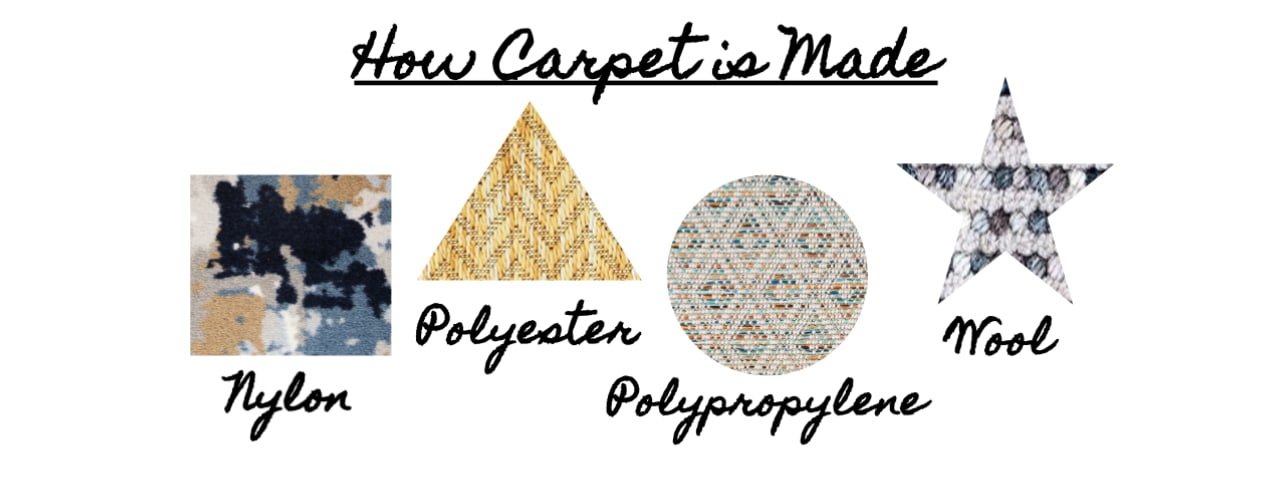
This cut, that color. That pile, this backing. So much to decide with so little time and we’re already tearing at the seams!
Categories are,

What's in this Tuft?
The basics first.CAR·PET noun
Pronounced (kaar·puht)
Definition:
- Flooring made of thick woven fabric, typically wall to wall.
Can be Found Vacationing in: Rolls, Runners, or Tiles
Age: Speculated to have existed since 5BC, but stardom reached the United States in 1791
Now that we have you briefed, on to the nitty gritty.
There is a war in the carpet world and it is very pretty.
Synthetic vs Natural
On your left, we have our Synthetics.
100% Nylon
Couristan
Heavenly - Sea Salt
Stanton
Finsbury Park - Marine
Oxford Street - Desert

** Compared to Nylon
Couristan
Belize - Golden Canary + Chameleon
Tahiti - Chameleon + Golden Canary

** Compared to Nylon
Couristan
Grand Turk -Tidal Lagoon
Olde Chatham - Platinum
Nevis - Morning Sun
And on your right, we have our Natural.

Carousel - Mist
Manhattan Beach - Anthracite
CityScape - Gramercy
Now that you know what fiber you want. Let’s get,
In the Loop
There is a 3 step process when manufacturing carpet.
1. Tufting 2. Coloring 3. Sealing
- To the tufting machine!
Sometimes you can have both on a carpet, creating some interesting designs.
Gauge, Stitch rate, and Pile height, these ingredients were chosen to make a perfect carpet. And with these ingredients, some popular weaving methods, Axminster, Velvet, and Wilton were born!

- To the color wheel!
Fibers can be colored before or after tufting.
Pre-dyed carpets are Synthetic and often Solution Dyed, meaning before the fibers are extruded and take shape, color is added to the material in its liquid form.
Post-dyed carpets are Natural and often Continuous Dyed, which involves taking the unfinished carpet in its greige state, running it through an applicator that spreads or sprays dyes, and then steaming the carpet to lock in its new color. A colorful hot tub.
Print Dyeing also takes the unfinished carpet in its greige state and applies color with screen-printing, roller equipment, or inkjet printers to create beautiful patterns and designs. Fresh off the print and press.
All Together Now
- The last part of the process, Sealing!
Although there is still so much more to know about how carpet is made, we just hope you don't have to wonder where to get carpet from!
See you next time at Modern Carpet and Flooring.
Find us here, or Visit our website @ Modern Carpet and Flooring.
See You Soon! (•◡•)/







